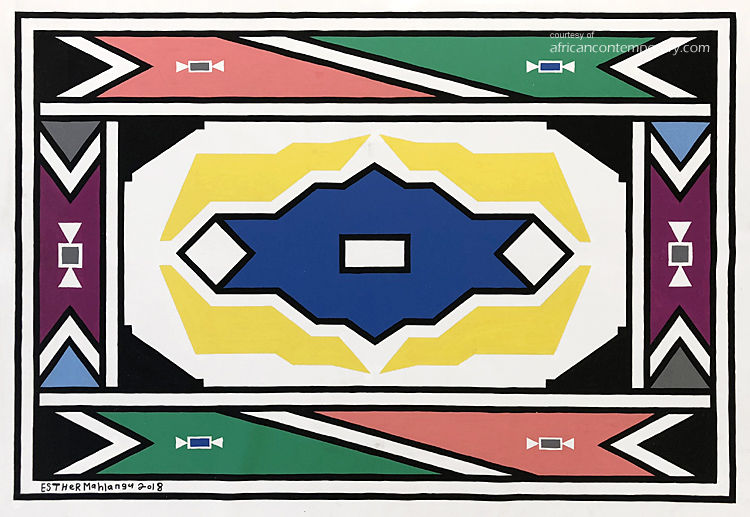BIO
Esther Mahlangu: The Iconic Ndebele Artist Who Brought African Art to the World Stage
Esther Mahlangu, born in 1935 in the culturally rich region of Mpumalanga, South Africa, is a globally renowned Ndebele artist. Her striking and vibrant paintings, rooted in traditional Ndebele patterns and techniques, have made her one of the most iconic figures in contemporary African art. Mahlangu's work is celebrated for its bold geometric designs and vivid color palette, which not only preserve the heritage of the Ndebele people but also introduce it to a broader, international audience.
Early Life and Artistic Journey
Esther Mahlangu was introduced to the art of painting at a young age, a practice traditionally passed down through generations of Ndebele women. She learned from her mother and grandmother, mastering the intricate patterns that adorn the walls of Ndebele homes, a practice symbolizing both cultural expression and social status within the community. These designs, characterized by their symmetry and bright colors, reflect the distinct identity of the Ndebele people and their resilience in the face of colonialism.
Global Recognition and Contributions
Mahlangu's international breakthrough came in 1989 when she was invited to participate in the prestigious "Magiciens de la Terre" exhibition at the Centre Pompidou in Paris. Her work, showcased alongside other global artists, garnered widespread acclaim for its unique blend of tradition and contemporary flair. Since then, Esther Mahlangu has exhibited in major art galleries and museums across the world, including the Smithsonian Institution in Washington, D.C., and the British Museum in London.
In 1991, Mahlangu became the first woman to create artwork for the exterior of a BMW car, a project that catapulted her into the global spotlight. The "BMW Art Car" she painted remains one of the most celebrated pieces in the series, symbolizing a powerful fusion of African art and modern engineering.
Cultural Preservation and Legacy
Beyond her artistic achievements, Esther Mahlangu is deeply committed to the preservation and transmission of Ndebele culture. She established the Esther Mahlangu Art School in her hometown, where she teaches young women the traditional art forms, ensuring that the legacy of Ndebele painting continues to thrive. Her efforts in cultural preservation have earned her numerous awards, including honorary doctorates and international accolades.
Conclusion
Esther Mahlangu's influence extends far beyond the art world. She has played a crucial role in bringing African art to the global stage, inspiring a new generation of artists and fostering a greater appreciation for cultural diversity. Her work is a testament to the power of art as a means of preserving heritage, promoting cultural pride, and bridging the gap between tradition and modernity.
Esther Mahlangu is not just an artist; she is a cultural ambassador whose legacy will continue to inspire and educate for generations to come.


